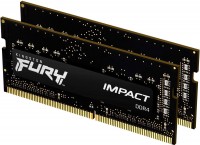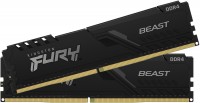RAM Kingston Fury series Renegade (peak performance)
Kingston Fury Renegade
At the beginning of the summer, Kingston introduced a new gaming division, FURY, which replaced the HyperX brand, adopting all the technical and design developments from it. So, the flagship Predator memory family was replaced by the Fury Renegade line, which has slightly changed internally, but looks practically the same. Kingston engineers said they took advantage of the pause in sales talks to improve the layout of the circuitry and power circuits, resulting in a significant increase in memory frequencies while maintaining low latency and high gaming performance.
 |
As before, the Fury Renegade series includes purebred overclocking memory with select chips for overclocking, massive heatsinks for cooling and wide LED strips that pierce the “scallop”. Unlike the simpler HyperX Fury memory (now called the Fury Beast), the Renegade series RAM is more expensive, has better cooling and higher-end memory chips, thanks to which it manages to hit quite high frequencies in the region of 4000, 4266, 4600 MHz and even 5333 MHz. For Fury Beast modules, the speed, usually, rests on a frequency of 3733 MHz.
Given the brutal nature of the Fury Renegade series, it would be strange to see entry-level 4 or 8 GB kits here. In fact, the youngest member of this family is a single 16 GB stick clocked at 3000 MHz. And so, the most popular are high-ranking single variations and sets with a volume of 16, 32, 64, 128 and 256 (!) GB. Due to potential overheating, RGB modules are limited to 4600 MHz and latency from CL15 to CL19. Modules without backlight can work with CL13 latency and overclock to a record 5333 MHz.







